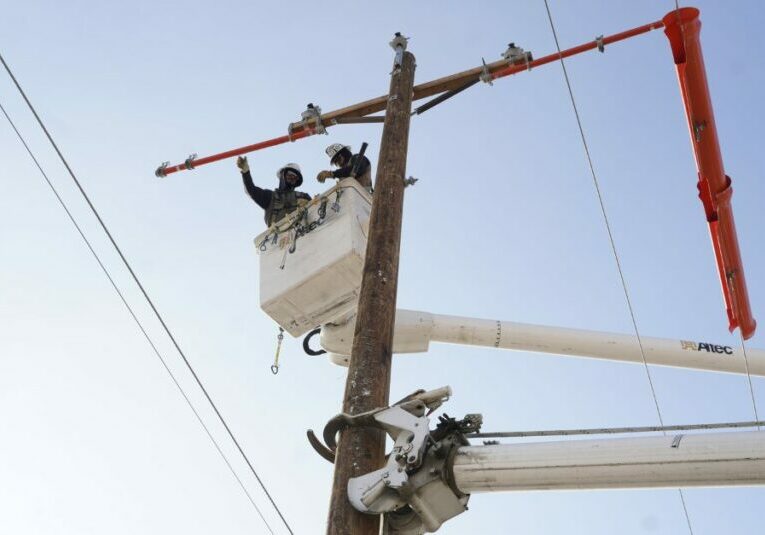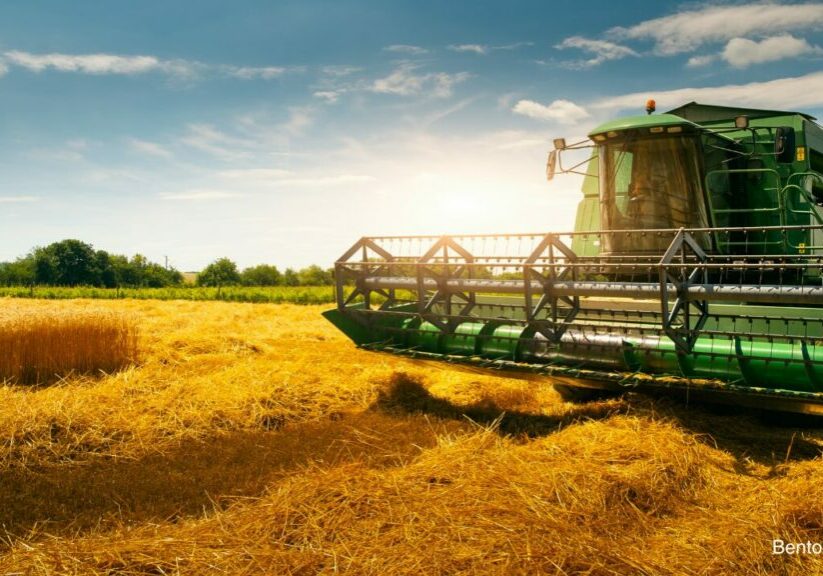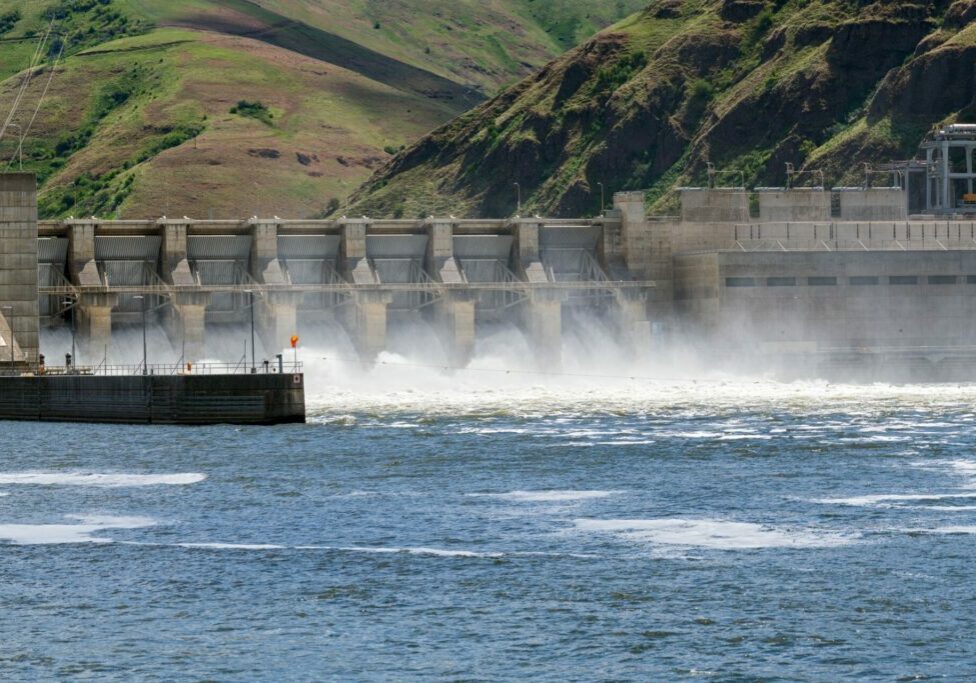Dams: One Structure, Many Benefits

At first glance, dams look like they hold back and store water, but they actually do so much more.
Dams protect communities from floods, provide water to irrigate farmland, enable safe passage for boats and barges, create places to play on the river and provide the Northwest with renewable, carbon-free electricity. While not all dams perform the same jobs, most dams provide multiple benefits.
Managing Flood Risk and Protecting Communities
River flows, especially during years with rapid snow melt or extreme rains, have the power to flood, damage and even destroy surrounding areas.
An example of that destructive power is the Vanport Flood of 1948, before flood control was a major consideration. After rapid snowmelt and heavy rains, the Columbia River rose to more than 23 feet above flood stage, and the levees failed. The flood destroyed the homes of 18,000 residents, killing at least 15 people and wiping out the then-second largest city in Oregon.
The Vanport Flood helped spur the development of flood control at Columbia River Basin dams to lessen the risk of another flood disaster.
Dams manage flood risk by working with the levee system to hold back water, releasing it over time. Columbia River Basin dams can store up to 40 million acre-feet of water in big artificial lakes called reservoirs. That’s a lot of storage space, considering 1 acre-foot of water would cover almost an entire football field with a foot of water.
Engineers operating the dams control how much water gets past the structures using outlets such as hydroelectric generators or spillways. To make sure dams have enough space behind them to store water, engineers draw down the reservoirs by letting more water pass through the dams in the winter in a process known as drafting. This allows for large amounts of rain and runoff in the spring to refill the dams’ reservoirs.
Irrigating Farmland and Hydrating the Basin’s Bounties
Harnessing river water for growing Northwest crops began more than 200 years ago, and larger-scale irrigation projects took shape by the mid-1800s.
Today, Northwest dams help the region’s fields flourish and feed the world with potatoes, sugar beets, mint, hops, fruit trees, grapes and other crops grown by irrigation.
Dams are important partners to Northwest farmers who depend on them to channel water through a system of pipes, tunnels and canals to irrigate the fields.
Most of the water diverted from the Columbia River Basin dams for irrigation goes to large swaths of drier lands in Southern Idaho, Eastern Washington and Eastern Oregon. In total, 6% of the Columbia River Basin’s yearly runoff is used to irrigate more than 5 million acres of Northwest farmland.
Enabling Safe Travel Along Aquatic Superhighways
Just as transmission lines are energy super-highways, transporting electricity from one city or state to another, the Columbia and Snake rivers are superhighways of a different sort.
Thanks to dams, barges transport more than 50 million tons of cargo each year between the Pacific Ocean and Lewiston, Idaho, 465 miles away. Eight federal dams with a series of reservoirs and navigation locks make it easy and safer for vessels traveling upstream of Bonneville Lock and Dam.
Locks are gated passageways that work much like elevators. They fill up or drain water through valves to lift or lower watercraft from one water level to the next. Barges, tugs and recreational craft can all use the locks to move upstream or downstream. Without the dams, the river would be a series of turbulent rapids, making it more difficult and less safe for boats to navigate.
Using Northwest rivers for shipping is a highly fuel-efficient way to transport cargo, including 60% of the nation’s wheat exports. For example, one barge carrying 3,500 pounds of cargo on the river replaces 134 trucks on the road. A towboat pushing four barges that carry 14,000 pounds removes 538 trucks from the road.
Providing Places to Play and Educational Opportunities
The areas behind and around Columbia River Basin dams are popular public sites for all sorts of fun activities. Visitors use reservoirs to enjoy water-based activities, from boating and fishing to windsurfing and kiteboarding. The land near the dams also offers recreational space for camping, hiking, horseback riding and wildlife viewing.
Some dams, such as Bonneville, The Dalles and Grand Coulee, offer visitor centers where guests learn about dam operations, appreciate their history, take tours and visit fish-viewing windows.
Today, many Northwest residents recognize the dams as multiuse fun zones that offer the ultimate spots for leisure.
Fueling the Northwest with Clean, Carbon-Free Electricity
Hydropower is a renewable energy resource created by the energy of falling water. Gravity forces water to flow through specially equipped hydroelectric dams to produce carbon-free and inexpensive electricity that provides the Northwest with nearly 90% of its renewable energy.
In 2020, the 31 Federal Columbia River Power System dams in the Pacific Northwest generated 7,482 average annual megawatts. But when working at full capacity, the dams have the ability to generate up to 22,442 MW. That’s enough to power up to 10 Seattle-sized cities.
Because dams do not produce carbon emissions when generating electricity, the abundance of hydropower makes the region’s power system the cleanest in the United States and prevents 50 million metric tons of carbon emissions from entering the atmosphere.
Courtesy of the Bonneville Power Administration. Learn more at www.bpa.gov.
Recent Posts

Electric Co-ops Grow for the Communities They Serve

Go Above and Beyond for a Safe Harvest

The Vital Role of the Lower Snake River Dams

5 Tips to Beat the Summer Heat

What You Need to Know About Furnace Filters

May is Electrical Safety Month

Programs to Help You Pay Your Electric Bill

5 Ways to Help You Save on Your Summer Energy Bill

Planting Trees and Bushes for Energy Efficiency




